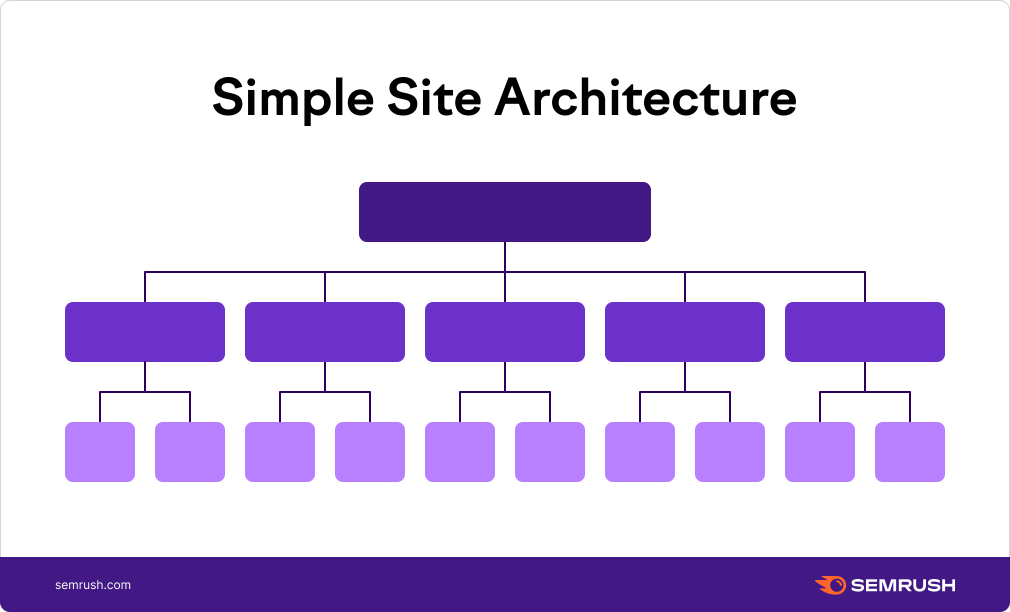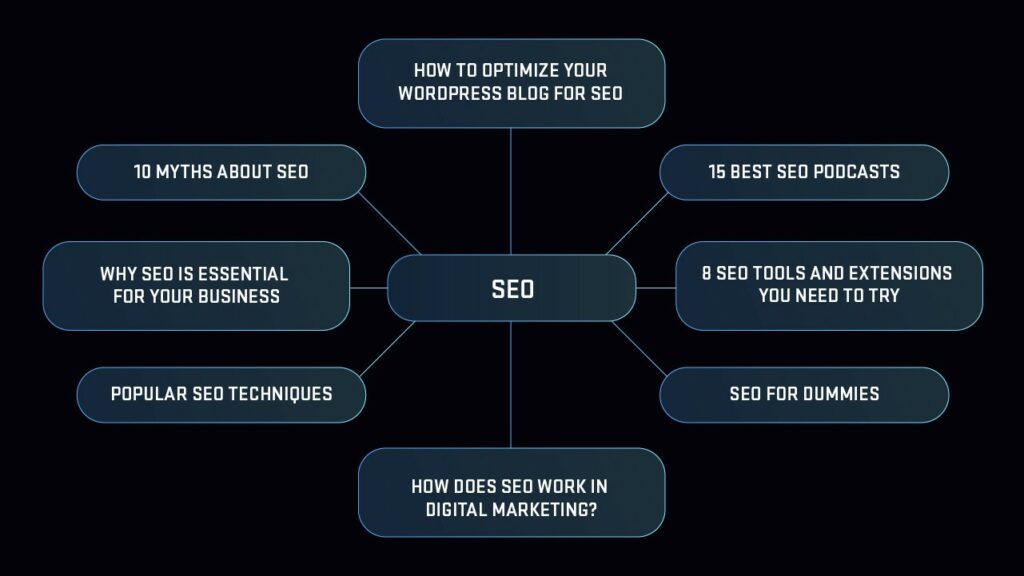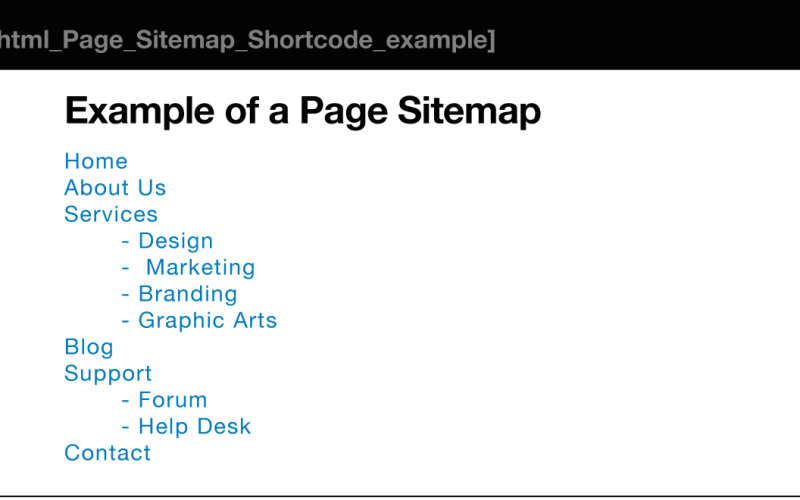How to Create a Site Structure That Will Enhance SEO
In today’s hyper-competitive digital marketing world, online visibility can separate success from failure. Business websites facilitate growth like few other assets, serving as the central hub for lead acquisition and conversions alike. As such, they need to offer an excellent User Experience (UX), backed by a well-crafted funnel that encourages conversions.
But even before considering the human visitor, websites need to earn search engines’ favor through Search Engine Optimization (SEO). It’s those optimizations that will enhance one’s online visibility and let more users find them in the first place.
Thankfully, user-centric and SEO-centric optimizations align somewhat, as they both share the common goal of offering users value. The best example of this, down to a site’s fundamentals, we may discuss today; how to create a site structure that will enhance SEO.
What is site structure?
First, let’s briefly define site structure and explore why it matters in multiple contexts.
Sometimes referred to as site architecture, site structure is a website’s basic framework. It’s the way it groups together content, links it, and presents it to users and search engines.
For a visual example of a simple, efficient site structure, we may cite SEMrush’s following illustration:

Now, site structure has multiple implications. It will affect how you develop your website over time, for a crucial example of note. But in this context, it primarily affects UX and SEO.
How does site structure affect the visitor’s experience?
Starting with the former, site structure alone can make or break UX. Across the customer journey, consider the 3 primary stages:
- First, engaging landing pages will be a primary asset through which to catch the attention of your visitors. If they’re stranded outside of your intended customer journey, users will simply not progress to subsequent pages and stages.
- Next comes consideration, framed by your content strategies. Here too, a loose site structure will hamper navigation and discourage visitors, as they won’t find your compelling content when you need them to.
- Finally, pages with conversion intent need their proper placement within the user’s journey as well. Finding them too soon or too early won’t work; only a robust site structure will ensure easy and timely discovery.
There are more implications in this regard too, but for text economy, those should suffice for our context.
How does site structure affect search engines?
Next, and central to our main subject, search engines, too, value a robust structure highly. For this reason, a site structure that will enhance SEO is crucial; they deeply care for it.
On their end, consider the following factors:
- Content discoverability. First, search engines will have trouble crawling and indexing pages across poorly structured sites. Orphaned pages with no internal links are particularly prone to this.
- Content prioritization. Similarly, a robust site structure will help search engines prioritize your main, “pillar” pages. Those we will delve into just below.
- Contextual content subject. Finally, a healthy, logical structure helps search engines contextualize your content’s subject. Topic clusters, which we’ll also discuss just below, allow them to properly gauge your authority in your field, too.
It’s for those primary reasons why SEO audits delve into such matters themselves; search engines really scrutinize links.
Creating a site structure that will enhance SEO
With this context in mind, we may now explore steps to ensure an SEO-friendly site structure. As we do, we will refer back to the context above for elaborations as needed.
#1 Conduct thorough keyword research
First and foremost, as with all things SEO, you may start with thorough keyword research. If you’re wondering how keyword research relates to site structure, the answer is simple; it will facilitate topic clusters.
What are those? Put simply; they’re clusters of content around a specific topic, centered on a main subject pillar. Nightwatch visualizes this brilliantly:

Great, you might say, but what does this mean in action then? Using SEO as an example, which is also our topic, Nightwatch elaborates further:

As you can see, keyword research is absolutely crucial to establishing this kind of structure. It will inform both UX and SEO, facilitating navigation and contextualizing clusters, respectively.
#2 Commit to your chosen site structure
With this essential asset in hand, you may then choose a site structure and commit to it. The 4 main options you have here are:
- Hierarchical. The most common type, a hierarchical structure, is essentially a tree structure. It’s what the first illustration above showcased, and is the typical structure of eCommerce sites.
- Matrix. In stark contrast, a matrix structure is so complex it primarily relies on search and internal links for navigation. Wikipedia is a prime example of this old, but still very effective type.
- Database. Somewhat similarly, the database structure also relies on search over clean navigation – as it caters to, well, databases. This approach is much more challenging to implement, but is bottom-up and, therefore, more future-proof.
- Sequential. Finally, the sequential structure is a very linear, page-to-page structure – as the name implies. This structure is best reserved for simpler sites and individual campaigns.
Notably, sequential structures specifically also see use in eCommerce for checkout processes:

#3 Establish URL hierarchies
The next crucial step toward a site structure that will enhance SEO comes in URL hierarchies. Otherwise known as “URL silos”, this practice has your URLs match your content clusters for both humans and search engines.
Put simply, your cluster content’s URLs need to fold into your pillar URL. So, using the above example of SEO again, your pillar URL should look like this:
- yourdomain.com/seo/
In turn, all SEO-relevant cluster content should have URLs like:
- yourdomain.com/seo /seo-myths/
- yourdomain.com/seo /optimize-wordpress-blog-seo/
- yourdomain.com/seo /seo-podcasts/
If this is not possible for whatever reason, you may still leverage internal linking to similar effect.
#4 Refine your internal linking
On that subject, internal linking, too, warrants utmost attention. There are a few different reasons for this, most notably including:
- Crawlability for search engines
- Easier navigation for users
- Contextual value for both
So, you may solidify your internal linking to:
- Provide context. Anchor texts help both users and search engines understand the context of your links, so you may use them strategically.
- Facilitate navigation. Internal links also facilitate easier navigation to other, contextually relevant pages within your website.
- Consolidate your site structure. Finally, internal links help content clusters distribute link authority among them. Perhaps most importantly, having each page linked to at least one more ensures no pages are left orphaned.
Of course, link authority also necessitates backlinks from authoritative sites. Those and link-building strategies deserve their own article to cover, but a robust, successful site will organically earn some too.
#5 Craft an HTML sitemap
There’s more, but now comes the final, easy part of ensuring a site structure that will enhance SEO. Now that you’ve solidified it, you may showcase it through web design. That is, you may map out your site structure for users and search engines alike – quite literally.
You may do so through HTML sitemaps; visible maps that facilitate easier navigation to your most valuable pages. A template example of one would be the following:

The process isn’t quite complex, but thankfully there are many solutions and WordPress plugins that can help with this step. For some examples of the latter, you may consider:
- Simple Sitemap
- Hierarchical HTML Sitemap
- HTML Page Sitemap
- Simple WP Sitemap
- Sitemap by click5
Should you rather explore your options, the WordPress plugin library offers plenty. Pick a reputable one that suits you, craft your map, and you’re ready!
In summary
To summarize, a site structure that will enhance SEO is one that’s robust, logical, and user-friendly. Search engines will use it to understand your content’s subject, gauge its value, and assign proper authority to it. Users will appreciate it no less, as it will ease navigation and help refine their customer journey with contextual value.
What’s more, effective SEO will attract more users through enhanced visibility. Those satisfied users will, in turn, produce better engagement signals, which also fuel SEO. So pleasing both isn’t just imperative; it’s also interdependent. Thankfully it’s also easy, as they both share the same goal of delivering value. So polish your site’s structure, satisfy them both, and let your business thrive.
In Closing
An effective branding strategy doesn’t have to be expensive or complicated. But it does have to be smart. And knowing what marketing choices to make to help your company stand out is the best starting point for helping your brand on the way to success.
The five tactics described in this guide are excellent ways for differentiating your company. So don’t hesitate to try them out.
Of course, to get the absolute most out of them, you will have to adapt them to your unique needs. The personalized touch is sure to give you a noticeable advantage over your competition. So, don’t be afraid to experiment a little until you nail down the methods that work best for you.


























































